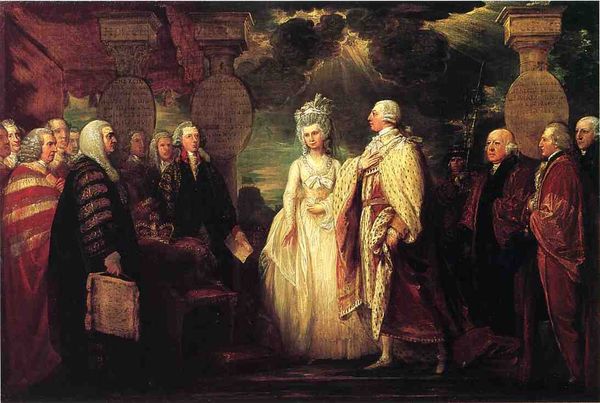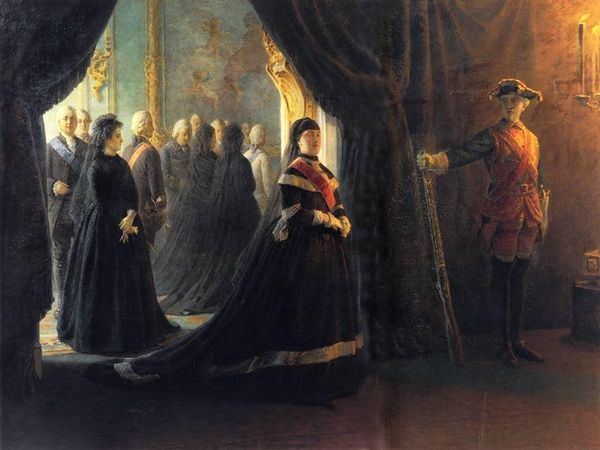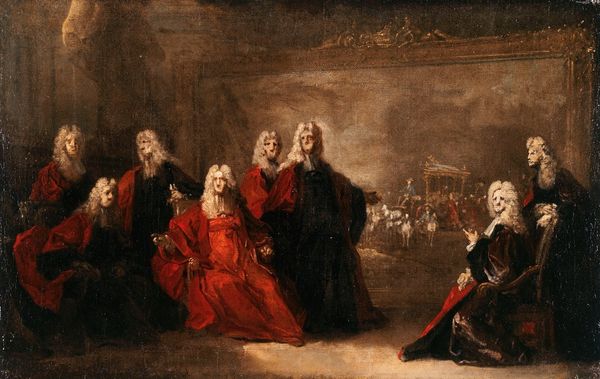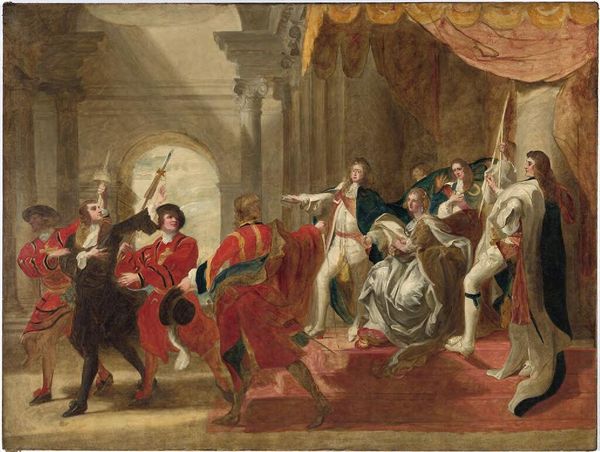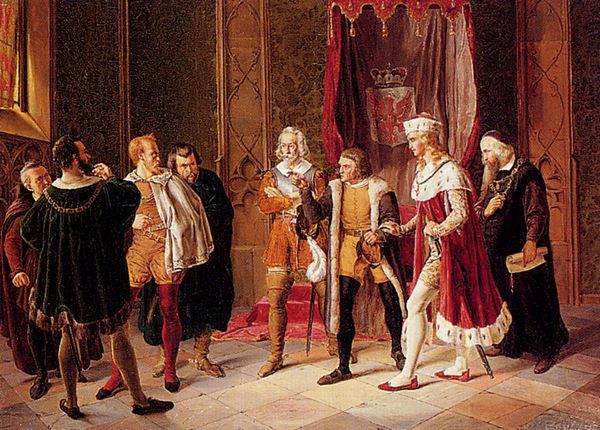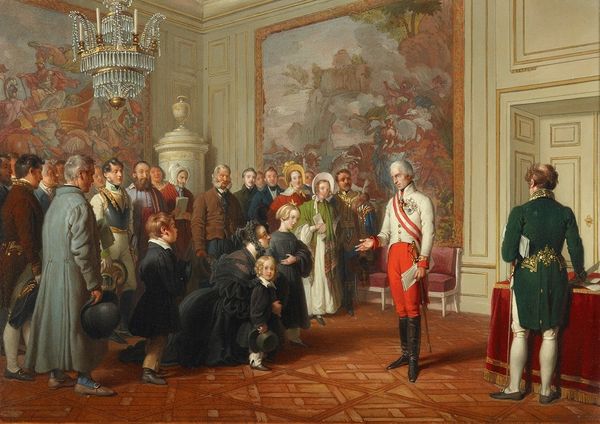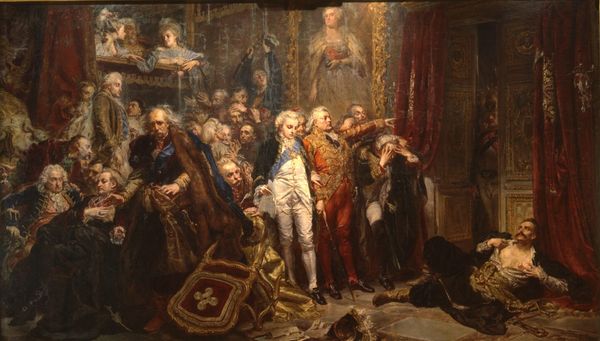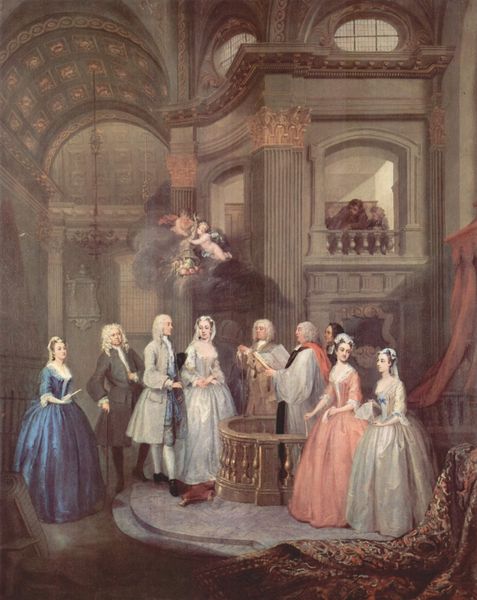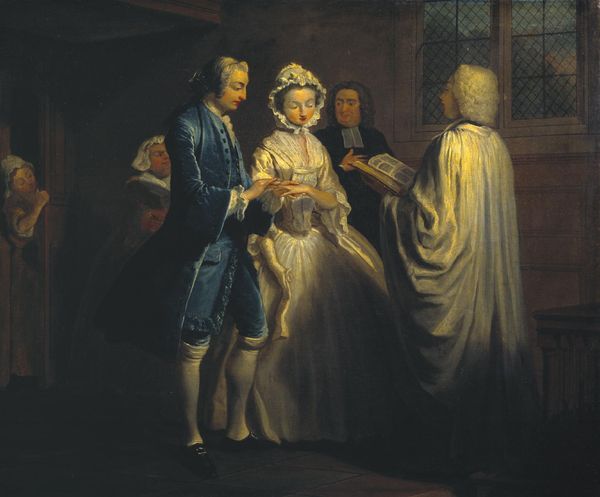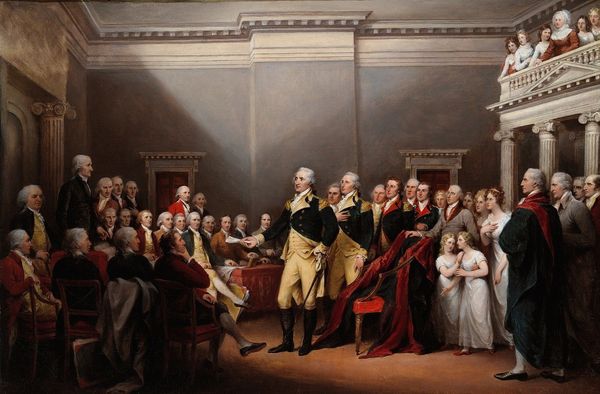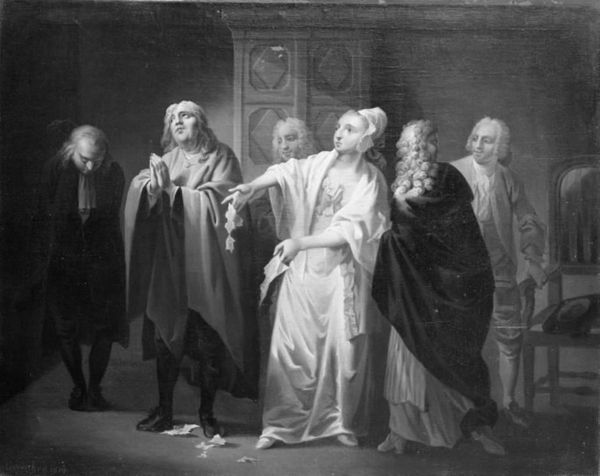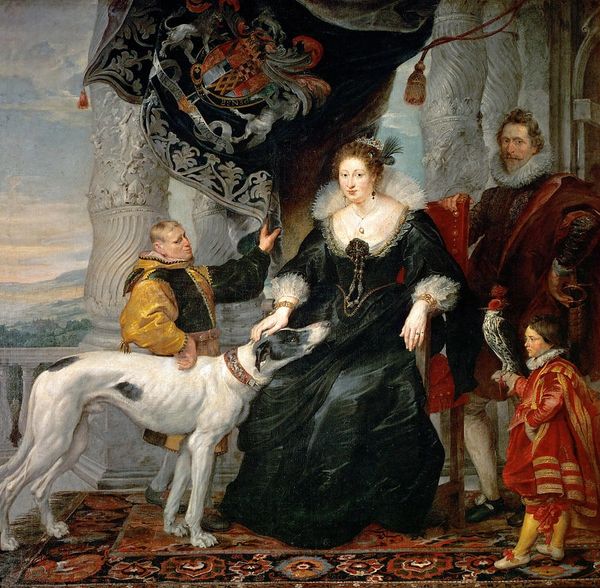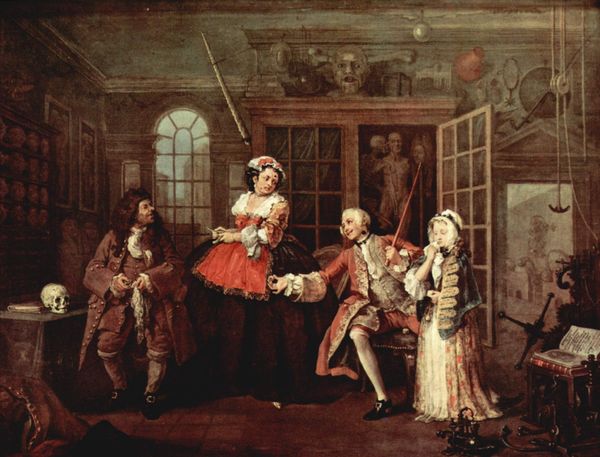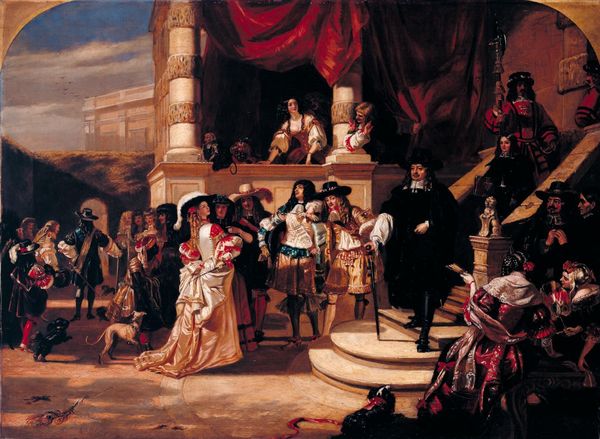
Copyright: Public domain
Curator: This is Adolph Menzel's "Begegnung mit Kaiser Joseph II in Neiße," rendered in oil on canvas in 1857. What strikes you about it initially? Editor: The lighting is dramatic, almost theatrical, guiding my eye directly to the handshake at the center. There’s an undeniable feeling of tension in the air, despite what appears to be a cordial greeting. Curator: Tension indeed. Menzel situates this moment within the complicated sociopolitical landscape of 18th-century Prussia, reflecting on power dynamics and shifting alliances. We see Kaiser Joseph II, representing the Habsburg Empire, meeting with Frederick the Great of Prussia. Editor: Right, the figures themselves embody power. Their clothes speak volumes! Notice Kaiser Joseph’s bright, almost angelic robes in contrast to Frederick's darker, more grounded attire. Is this a deliberate contrast implying their differing realms? Curator: Absolutely. The bright robes of Joseph II stand out to symbolize his standing as someone favored by the divine or a divinely mandated role in that empire, whereas Frederick’s dark cloak emphasizes the reality of the political landscape of Prussia. Note how his shadow seems to engulf part of Joseph. Menzel strategically employs symbolism here. Editor: And the architectural setting contributes too. That massive archway dwarfs them, while all those men flanking the two central figures make it hard to focus on just Frederick and Joseph! Do you see a parallel to depictions of monarchs in religious paintings, icons and what they embody? Curator: That’s a great point! By painting it on such a grand scale, and within this baroque aesthetic, the setting underscores the monumental historical importance they represent, and that moment when empires meet. It visualizes history painting in the 19th century. Editor: So the encounter itself, framed this way, moves past a mere event, and morphs into a turning point—maybe the meeting of opposing forces in the long view of things? It's really about legacy then, how images echo throughout history. Curator: Precisely. We recognize the potent symbolic nature of handshakes to show these two men as trying to come together during turbulent moments that could fracture relations with competing powerhouses. The tension lies not only in this meeting but its significance for their empires’ relationship. Editor: Thank you. I appreciate now seeing it as a window into something larger than one encounter, seeing the historical threads it's woven from, the visual signs involved in what history remembers of it all. Curator: You're welcome. Looking at the deeper symbolism embedded by Menzel enhances not only this work but helps us to question and expand our own understanding about the political and cultural conditions depicted.
Comments
No comments
Be the first to comment and join the conversation on the ultimate creative platform.
